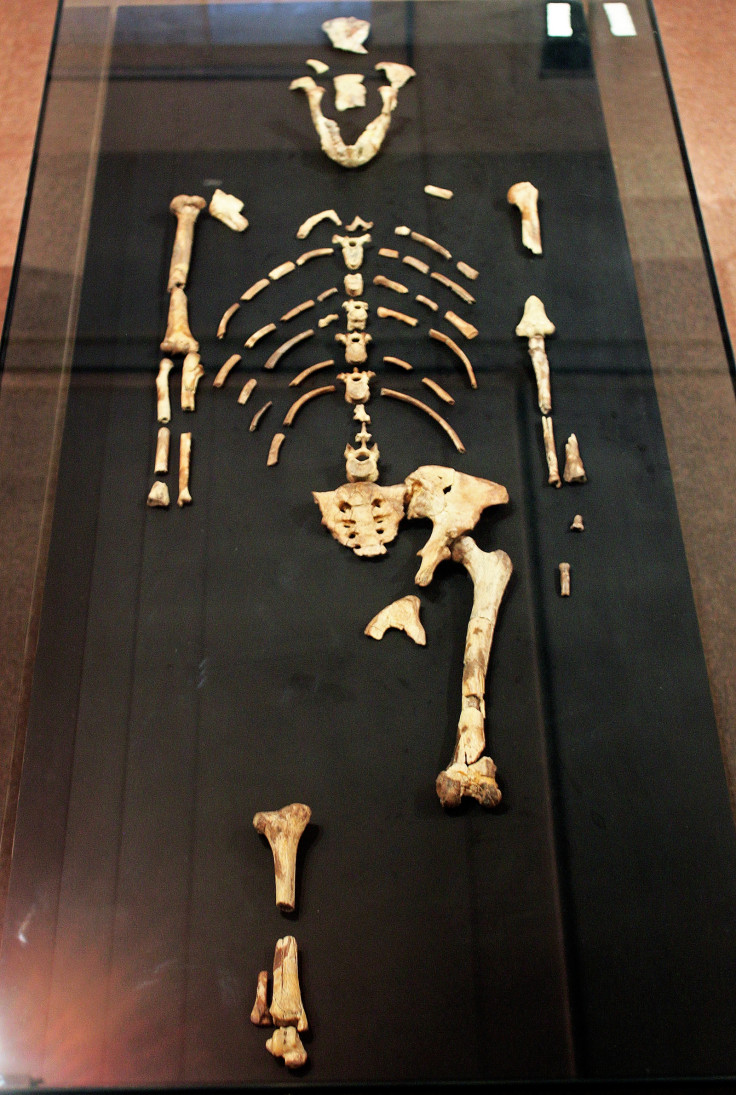Lucy the 'missing link' skeleton - Baboon vertebra discovered among world-famous bones

A baboon bone has been discovered in one of the world's most famous skeletons – that of 'missing link' Lucy.
The Australopithecus afarensis skeleton was first discovered in Ethiopia in 1974 by Donald Johanson and Tom Gray.
They discovered dozens of fossil fragments belonging to a hominin species dating back to 3.2 million years ago.
Later analysis led researchers to declare the skeleton was that of a new species – she had a small skull capacity similar to that of apes, but walked upright like humans.
This showed that human ancestors walked on two legs before they developed larger brains, putting an end to a debate about our evolution.
However, now scientists have found that one of the fossil fragments making up her skeleton could actually belong to a baboon.
New Scientist reports that Gary Sawyer and Mike Smith, from the American Museum of Natural History in New York, were working on a new reconstruction of Lucy's skeleton when they came across something unusual.
Scott Williams, from New York University, said: "Mike pointed out that one of the [vertebra] fragments, which no one, including me, had really paid close attention to, looked fairly small to fit with the rest of Lucy's vertebral column."
After looking into the fragment, they realised it was "just too small" to belong to Lucy.

Researchers initially thought the fragment may have come from another younger member of Lucy's species, so they team did a comparative study with vertebrae from other Australopithecus fossils.
They also included animals known to have lived in the region 3.2 million years ago where Lucy was found.
Findings indicated that the bone did not belong to a human ancestor at all, instead that it was more closely aligned with that of a baboon.
Williams said: "Baboons were a close match, both in shape and size. So we think we've solved this mystery. It seems that a fossil gelada baboon thoracic vertebra washed or was otherwise transported in the mix of Lucy's remains."
The team stress that all of the other fragments are correctly identified and the finding does not change Lucy's importance to our evolutionary history.
© Copyright IBTimes 2025. All rights reserved.






















